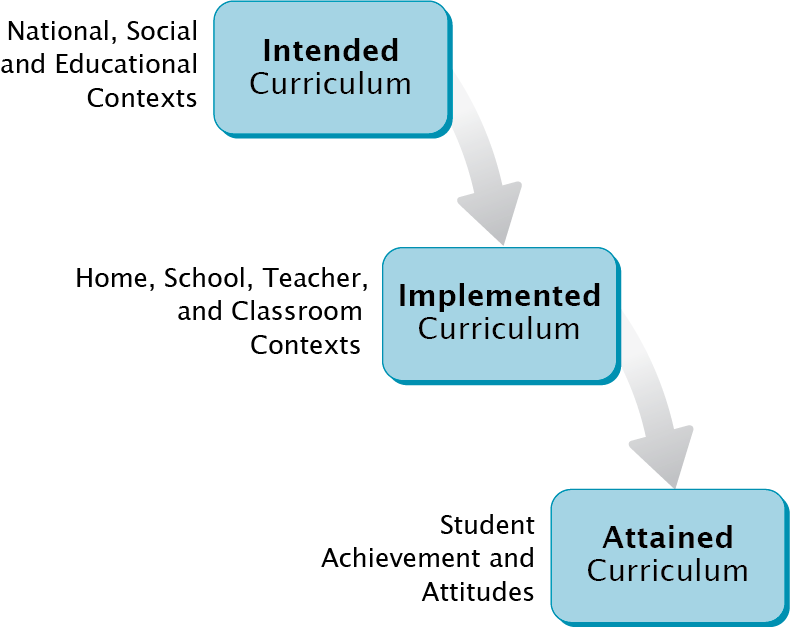Policy Relevant Data About the Content and Contexts for Learning Mathematics and Science
TIMSS uses the curriculum, broadly defined, as the major organizing concept in considering how educational opportunities are provided to students and the factors that influence how students use these opportunities. The TIMSS Curriculum Model has three aspects: the intended curriculum, the implemented curriculum, and the attained curriculum (see Exhibit 1). These represent, respectively, the mathematics and science that students are expected to learn as defined by countries’ curriculum policies and publications and how the educational system should be organized to facilitate this learning; what is actually taught in classrooms, the characteristics of those teaching it, and how it is taught; and, finally, what it is that students have learned and what they think about learning these subjects.
Exhibit 1: TIMSS Curriculum Model

Working from this model, TIMSS routinely publishes the TIMSS Encyclopedia with each assessment to document education policies and the curriculum in mathematics and science in each of the participating countries. The TIMSS 2015 Encyclopedia: Education Policy and Curriculum in Mathematics and Science (Mullis, Martin, Goh, & Cotter, 2016) provides an important resource for helping to understand the teaching and learning of mathematics and science around the world, with particular emphasis on schooling through the eighth grade. A chapter prepared by each country and benchmarking participant summarizes the structure of its education system, the mathematics and science curricula instruction in the primary and secondary grades, the teacher education requirements, and the types of examinations and assessments employed. To provide standard information across countries that supplements the chapters, countries complete a curriculum questionnaire about their mathematics and science curricula, school organizational approaches, and instructional practices.
TIMSS also asks students, their parents or caregivers, their teachers, and their school principals to complete questionnaires about their home and school experiences and instructional contexts for learning mathematics and science. The questionnaires are developed according to a carefully developed framework that is updated with each assessment through iterative reviews by the TIMSS National Research Coordinators and the TIMSS Questionnaire Item Review Committee of international experts. Data from these questionnaires provide a dynamic picture of the implementation of educational policies and practices that can raise important issues and suggest avenues for educational improvement.
Chapter 3 of this volume contains the TIMSS 2019 Context Questionnaire Framework. TIMSS 2019 will concentrate on measuring trends for the existing context questionnaire scales and developing several new context questionnaire scales that address emerging areas of research in educational effectiveness.
